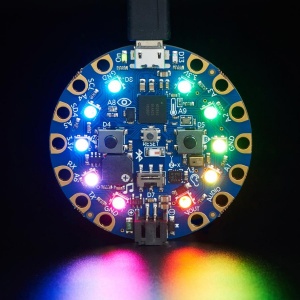Difference between revisions of "Circuit Playground Express: Part 2"
Jump to navigation
Jump to search
m (Vincent moved page Part 2 to Circuit Playground Express: Part 2) |
|||
| (3 intermediate revisions by 2 users not shown) | |||
| Line 10: | Line 10: | ||
===Context=== | ===Context=== | ||
===Geography, pinout=== | ===Geography, pinout=== | ||
| + | |||
| + | [https://learn.adafruit.com/adafruit-circuit-playground-express/pinouts here] | ||
==Makecode== | ==Makecode== | ||
| Line 23: | Line 25: | ||
===Clap lights=== | ===Clap lights=== | ||
| − | |||
| − | |||
| − | |||
| − | |||
==Arduino== | ==Arduino== | ||
| Line 32: | Line 30: | ||
=Small exercise= | =Small exercise= | ||
| + | [[Category:Circuit Playground Express]] | ||
Latest revision as of 11:33, 18 November 2022
Circuit Playground Express
Adafruit Circuit Playground Express is an all-in-one design board featuring a processor, sensors, LEDs, USB, and more, making it an ideal introduction to electronics and programming.
Thus, is a little different from the normal boards from the hardware side, since the pins go out to those big wide sewable pads, instead of normal pin headers (like on the Uno)
because Circuit Playground Express running on a faster processor compared to Arduino Uno. We can also use it for audio-based projects.


Overview
Context
Geography, pinout
Makecode
What is makecode
The reference
Same but seen in a linear way
A big repository of tutorials by Adafruit